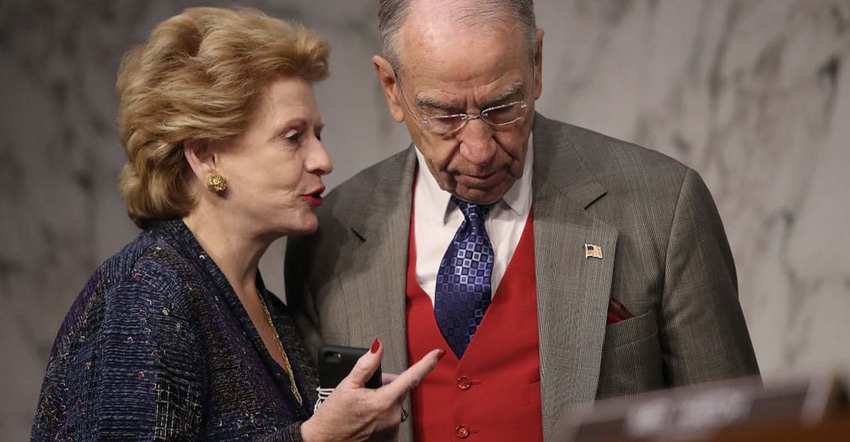February 28, 2018

Two Midwest senators are raising concerns regarding farm program payments to the estates of deceased farmers.
“We must be careful stewards of taxpayer money and work to avoid wasteful payments,” said Sens. Debbie Stabenow, D-Michigan, and Chuck Grassley, R-Iowa, who wrote a letter to the USDA Farm Service Agency. “As we prepare to write the next Farm Bill, we write to request information so we can understand more about USDA payments to an estate after the death of a farmer.”
Under current law, farmers are required to be “actively engaged in farming” in order to receive farm program benefits by providing labor or management. USDA recently issued guidance that considers an estate to be actively engaged – and thus eligible for farm payments –for up to two years after the death of a farmer without review. The Government Accountability Office has criticized USDA payments to estates which have allowed some heirs to game the system and evade payment limits by collecting benefits on behalf of the deceased in addition to their own property.
Stabenow, the ranking member of the U.S. Senate Committee on Agriculture, Nutrition, & Forestry, and Grassley, a senior committee member, have requested the USDA FSA answer the following questions no later than March 16, 2018.
Please describe in detail how FSA conducts compliance review of estates to ensure that actively engaged in farming requirements are met. Include in this explanation a description of whether all estates are reviewed and when such reviews of done.
Please describe how USDA can determine that an estate meets the requirements of actively engaged in farming after a farmer’s death. Please be specific.
The FSA notice indicates that a report listing estates that have been open for more than two program years has been provided to all state office (“Active Estates Report”). Please provide to us a copy of the most recent version of this report.
In addition to the estates listed on the report, how many additional active estates exist in USDA’s records that were not established during the current program year?
Please provide the following information on USDA’s efforts in the past two years: total number of active estates reviewed for compliance with actively engaged in farming requirements; number of estates that were found to be in compliance with actively engaged in farming requirements and the total dollar amount of benefits properly provided to such estates; and number of estates were found not to be in compliance with actively engaged in farming requirements, the total dollar amount of benefits improperly provided to such estates, and amount of such improperly awarded benefits recovered to the federal government.
Describe what review or reporting is conducted of county committee determinations with respect to estates that have been active for more than 2 years. What have the results been of any such reviews?
Does FSA check its records to determine if heirs of estates are separately receiving payments? If so, how often are such checks done? If not, why not?
Is it possible for heirs of an estate to receive payments from an estate and payments to themselves that when combined exceed a single payment limit?
Does FSA check its payments to ensure that estate’s heirs are not collecting payments from an estate, that when combined with their own payments allow that individual to exceed payment limits?
Can an heir that exceeds the adjusted gross income limitation receive payments indirectly through an estate?
Can an heir that is not actively engaged in farming receive payments indirectly through an estate?
Are any changes in regulation or statute necessary to require payments to estates to be attributed to the heirs to avoid heirs exceeding payment limits, violating AGI limits or actively engaged in farming requirements? If so, please describe any such changes needed.
Does FSA conduct any data mining or additional review of estates that would be susceptible to being left open longer than necessary? E.g. An estate or heir that has payments that are close to the payment limit or would exceed the payment limit if combined. If so, what criteria are used for the review and what have been the results?
Source: Senate Agriculture Committee
You May Also Like




